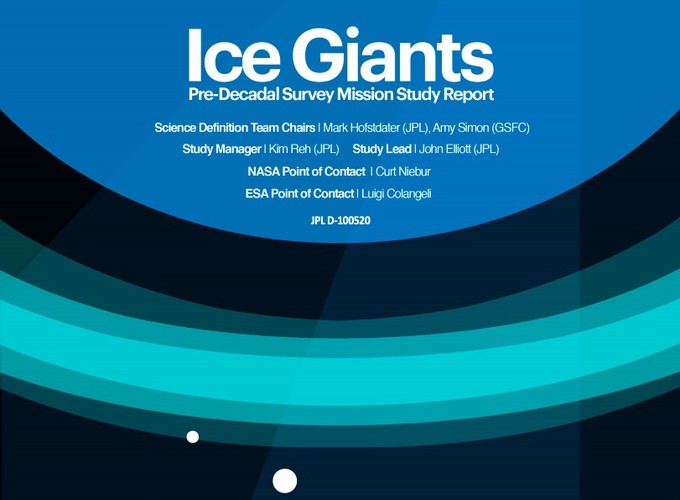The Ice Giants Study was commissioned by NASA to take a fresh look at science priorities and concepts for missions to the Uranus and Neptune systems in preparation for the third Planetary Science Decadal Survey. The study team assessed and prioritised science objectives taking into account advances since the last Decadal Survey, current and emerging technologies, mission implementation techniques and celestial mechanics. This study examined a wide range of mission architectures, flight elements, and instruments. Six of the prioritised concepts were studied via JPL’s Team X process and resulting cost estimates were subjected to independent assessment by The Aerospace Corporation. High-fidelity studies were carried out on four mission architectures:
- Neptune orbiter with ~50-kg payload and atmospheric probe.
- Uranus flyby spacecraft with ~50-kg payload and atmospheric probe.
- Uranus orbiter with ~50-kg payload and atmospheric probe.
- Uranus orbiter with ~150-kg payload but without a probe.
The Executive Summary and Full Report are now available.
The study concluded that “The study validated that NASA could likely implement a mission to the ice giants for under $2B (FY15) that would achieve a worthy set of science objectives. Opportunities exist to achieve all priority science objectives for less than $3B. A partnership with another space agency has the potential to significantly increase the science return while limiting the cost to each partner. Given the development time scale of outer solar system missions, the time of the best launch opportunities, and—for Uranus missions—the desire to arrive at the optimal season, now is the time to begin formulating the next mission to the ice giants.”
